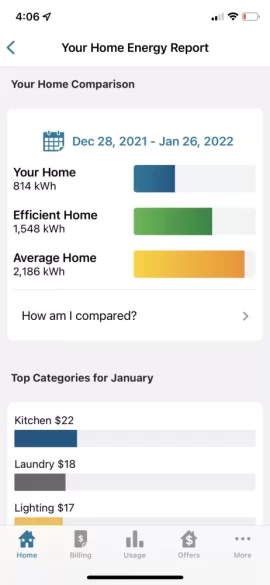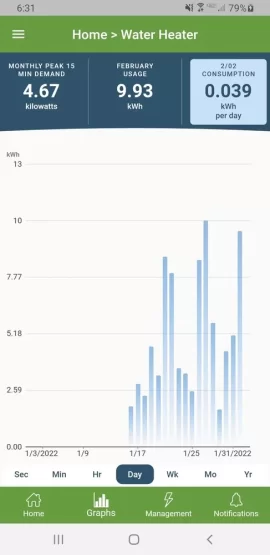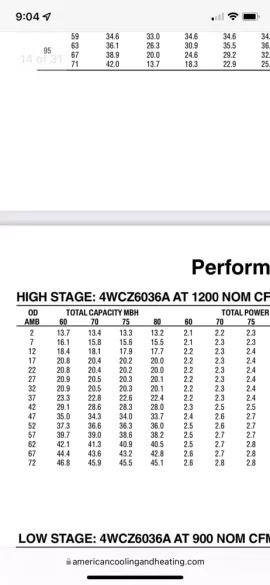Thanks for your response! Gives us further ideas.I'm multitasking, so if I list something you've already tried, forgive me for not reading carefully, but here's the low tech, non-spreadsheet, non-smartphone approach I'd use first in investigating the issue:
There are some metal roof valleys, and some entire metal roofs that are heated in a way that would not be visible from the exterior. They're normally thermostatically controlled and could use a ton of power once the weather gets cold. If you have thermostatically controlled heating tapes on your plumbing, that could also be the culprit. Heated downspouts and drain lines are included possibilities here.
It looks like you have an old style rotating dial meter. Those make it pretty easy to watch the usage change as you turn breakers on and off. I'd account for what any breaker that causes the meter to spin significantly in cold weather is doing with the power, starting with the 220v breakers. This would be best done at night when your solar is offline. Alternatively, turn off all of the breakers, and just turn one on at a time, maybe with the obvious big loads like the fridge, water heater, heat sources turned off or unplugged at the unit. You can measure most of those with your watt meter at the unit to know what they're up to.
I'd wonder what the mini-splits are doing. Could they be doing frequent power sucking defrosts? Could they be going into a backup resistance heat mode?
Slim chance, but I wonder about the hybrid HWH. The water temp coming into my house varies a lot seasonally, dropping to near freezing at mid-winter. Could colder water coming in be causing the HWH to kick into resistance mode frequently? I think that can be programmed out to test. I know my water heating load also goes up a lot in the winter, both because of cold inlet temperature, and because of the tendency to prefer warmed water when it's cold. Plus, anything mixing hot and cold for a desired temp (shower, washing machine) is going to need more hot and less cold for the same temp.
The thing about a hybrid HWH, is if it's using inside air, not only will the unit use power, but you're going to need some form of heat to replace what it's taking from the home, so you have to pay for the heat one way or the other in the winter. I would expect that to create a significant difference season to season all by itself. They're a good idea, that makes far more sense in the South, than the North.
Is your house lit up like a sports field inside and out during the long dark days of winter? Some I see I would need sunglasses to live in!
Have your kids secretly taken up cryptomining as a winter hobby?
Good watt hunting!
No roof or electrical heating tapes.
The rotary style meter is the solar production meter. The Net Meter is outdoors and is digital. If Net Meter were a rotary one, I could see testing it as you spoke of.
The mini splits, it is a mystery what they are doing. They are I believe about 15 years old. We turned almost completely off in late Dec. We've had some experience with a brand new mini split system in our old house, going through one year of use.
The hybrid HWH...I am awaiting a digital manual from Rheem. It is located in our basement, where hubby says temp is between 40 to 50 degrees since heating season began.(We do not have any heaters in the basement.) It is a 2014 model. Water is municipal supply with supply line coming in very close to heater. I do imagine it is much colder in winter than summer. We do have HWH set on the Energy Saver mode, which I believe will use heat pump feature and switch to electric when no longer efficient. Have it set at 120. It is good for one 10 minute shower.
Our house can shine brightly when my daughter visits, but not as a football field! We had changed all the bulbs to LCD before the Kwh usage went haywire. And have several motion sensor or timed lightbulbs in various locations(closet, rooms where lights are left on....). Several of the rooms have the built in ceiling fans with about 5 bulbs. But we don't burn all those bulbs!
It seems that our next step will be to install one of the Emporia Vue 2 monitors on the Main electrical panel. That will permit us to test all the appliances in questions. When I talked today to the Solar Rep at National Grid, she did not even know something like this existed. Thank goodness for this Forum!
And no to the Kids and Cryptomining! They actually live nearby(age 34-special need twins). Son only stops in when there is food offered and daughter stops in too much!
I have attached clarifying images of meter as well as the Solrenview data logger that shows up on web address: https://www.solrenview.com/SolrenView/mainFr.php?siteId=522
Thanks again, I will keep you updated.


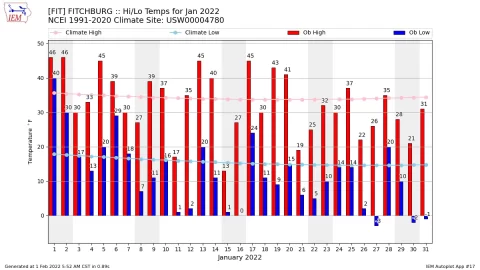

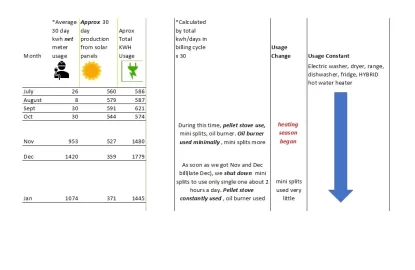
 List could go on.
List could go on.